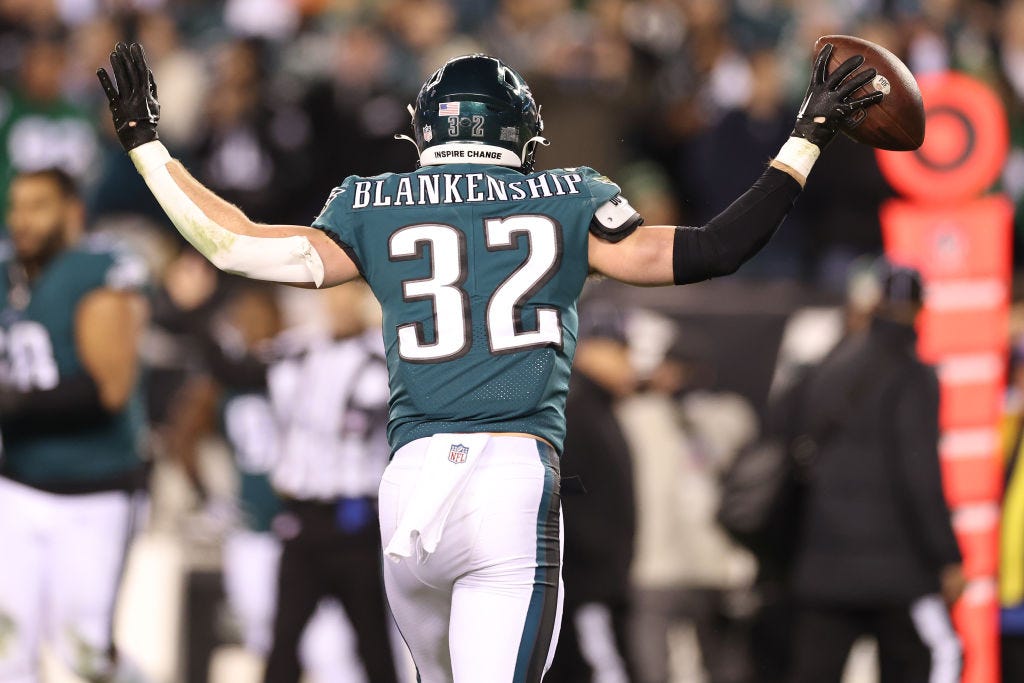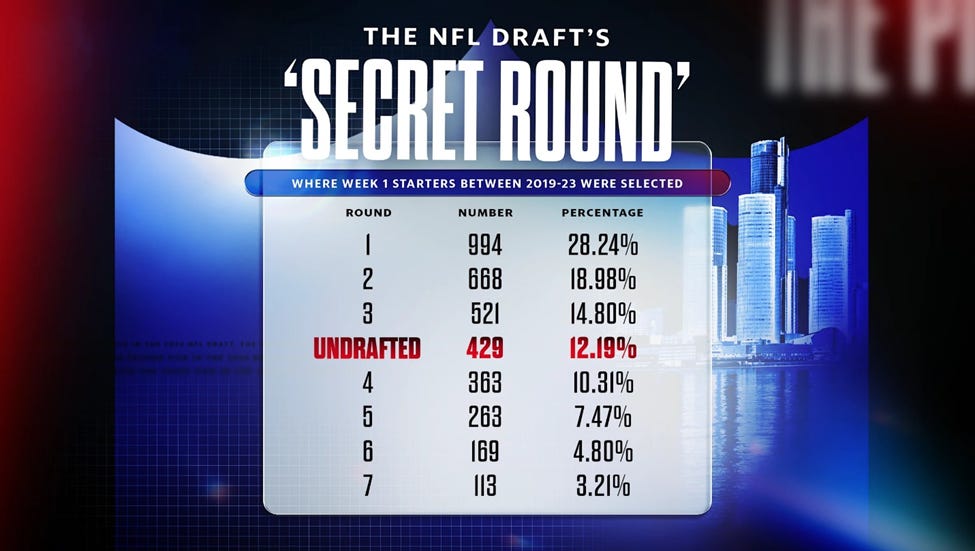Using Guaranteed Money to Rank 2025's Top UDFAs
The salaries for undrafted free agents have been released. Can we use this to predict which ones will make NFL rosters?
Last year, I explored whether or not there was any value in using guaranteed money for undrafted free agents to predict the likelihood that those free agents made the 53-man roster.
If you want this year’s list, click here to jump to the bottom of the piece.
The theory behind using this data is that it should tell us much more about the revealed preferences of the NFL – even more than the draft does. We can’t know how much the NFL, at large, values a player based on where they were drafted – one team could always massively overvalue a player and pick that guy early.
Contract negotiations should be different. NFL teams have an incentive to minimize the value of contracts and how much liability they take on for guaranteed portions of contracts. So they bid low, while players with leverage push that number up by playing teams against each other.
If teams genuinely value that player, they will allow that guaranteed number to increase, signaling the collective valuation of that player’s talent relative to other undrafted free agents.
That’s how the Eagles landed a coveted player like Reed Blankenship, pictured above, who ended up playing a critical role for them in their Super Bowl run. Blankenship was a top 300 Consensus Board player given $55,000 in guarantees.
A highly valued undrafted free agent has a pretty good setup after they clear the initial hurdle of making the roster. Starters from that group can earn more money, faster, than seventh-round starters do – something I outlined in my piece on Shedeur Sanders’ slide.
Does that mean that being a coveted UDFA is superior to being a late-round pick? Not quite.
Before digging in to that, it’s important to be clear about how likely it is for players to make initial 53-man rosters.
Every so often, you might see a graphic on a television broadcast or online showcasing how important UDFAs are to roster construction that can be interpreted incorrectly by those presenting the data or those looking at it without context.
Some broadcasters use this to say that you’re more likely to make an impact as a UDFA than as a seventh-round pick, which really isn’t the case. There are more UDFAs on rosters than there are any Day Three pick group, as you can see.
In the example above, Yahoo! Sports’ Jay Busbee does bring up why this is the case – more than ten times as many UDFAs sign with teams than are drafted in any particular round – but still quotes former Jets general manager Mike Tannenbaum as saying, “You could make the argument that not getting drafted is better than going in later rounds.”
In either case, we can do better – we can use post-training camp cutdown rosters to estimate make rates for each individual round and compare that to the UDFA population.
From there, we can estimate how much guaranteed money and pre-draft acclaim can help us predict which undrafted free agents are most likely to end up on a roster or make an impact.
Roster Make Percentage by Round
Going back to 2018, I gathered data on the roster-make percentage on cutdown day for each draft round. This data isn’t completely definitive; it treats those put on injured reserve as “misses,” which means that players like Jameson Williams and J.J. McCarthy didn’t “make” their teams.
Nevertheless, it’s useful because injury risk is (mostly) evenly distributed across rounds, even though you’d expect player with injury concerns to be drafted later.
Nine percent is very low, but we know that teams put much more stock in some undrafted free agents than others. Using guaranteed money, we might be able to predict which players have the best odds of making the roster.
Keep reading with a 7-day free trial
Subscribe to Wide Left to keep reading this post and get 7 days of free access to the full post archives.





